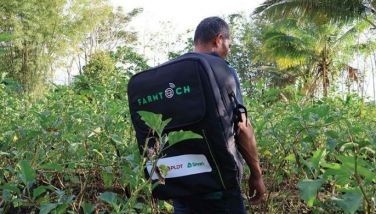Implementing the right safety measures in the face of Omicron

It feels like a merry-go-round that we just can’t seem to get off. That is how it feels with the threat of a new virus looming. There has been just a tinge of hope appearing in parts of the country as cases decreased and alert levels were adjusted. We were finally beginning to see a bit of progress that indicated that we may be on the right track. In fact, one of the biggest pieces of news recently was the removal of the face shield mandate in areas under lower alert levels.
However, here’s hoping you didn’t toss your face shield just yet as it could make a comeback. Vaccine czar and National Task Force chief implementer Carlito Galvez Jr., said that requiring the use of face shields is among the topics being discussed in the face of a potentially dangerous new variant.
We have been in this situation before. It feels like yesterday the Delta variant was declared a “variant of concern” before sweeping the globe and causing lockdowns anew. Now it’s B.1.1.529 or the “Omicron variant.” The strain was first detected in South Africa as a SARS-CoV-2 variant of concern. Officials said it spread quickly and could potentially be more vaccine-resistant.
The data is not yet conclusive, and the variant is still being studied and closely monitored. But infections in South Africa have increased steeply in the past several weeks, coinciding with when the new variant was detected. Countries in Europe have already begun announcing lockdowns anew due to the potential threat of the virus strain already being detected in several European regions.
It’s extremely understandable to be worried, scared even, and we absolutely have to exercise caution. However, I hope that we take what we have learned from previous strains and apply it here. We need to be sure to invest in the right preventive measures. We don’t need to waste time on another round of face shield debates when we should be looking at stricter travel bans from impacted countries and increased tracing, testing, and isolation.
Currently, the government has approved a temporary ban on inbound flights from South Africa, Botswana, Eswatini, Lesotho, Namibia, and Zimbabwe. This is a good first step. However, as Omicron has begun to appear in other countries, these temporary bans may need to be expanded, especially during the holiday season as everyone try to go home to the Philippines.
We also need to carefully and purposefully track the strain. That doesn’t just mean keeping a close eye on countries where it has been detected, but also improving our own test and trace capabilities. As alert levels have gone down, tracing and testing have also been reduced. This needs to be bolstered again in the face of a new virus strain.
We have to exercise more caution and find new ways to mitigate Omicron. The markets have already expressed fears of lockdowns anew, and this would be a massive blow to an economy that is very slowly getting back on its feet. We have to show that we are more prepared and ready to handle anything that happens this time around.
To be fair, though, it wasn’t just the Philippine market that was rocked by the news of Omicron. Markets around the world fell last Friday when news of the new strain broke. Worries slammed markets worldwide, and investors are concerned anew about how it could impact economic recovery in the country.
That’s why we have to get in front of this while we still can. There is still continued support of the economy and the potential for business growth in 2022. Still, all of that could change if we find ourselves caught unaware again. This is a chance to show that we have learned from our experiences and are better equipped to live in this new normal.
After all, I think everyone realizes that this could be the new normal that we have to deal with for several more years to come. I truly pray that we can put COVID in our rearview one day, but that is far from here. Even with cases going down, all it takes is another outbreak for us to see a surge again.
I think we also have to be cognizant that we can’t “celebrate” a decrease in cases by suddenly not following safety protocols. While a reduction is something to be happy about, we must recognize that we got there because we were cautious. It seems a waste of our efforts to simply become careless again.
If we want to move into a safer new phase post COVID, the whole world has to work together. That’s the only way pandemics in the past were beaten. That means working as one to get vaccines to countries that need them most. The geopolitical climate has made cooperation difficult, but we can’t ever reach the elusive “herd immunity” if we’re not vaccinating everyone worldwide.
Here in the Philippines, we can do our part by continuing to participate in the vaccination drives (and boosters as needed) and encouraging others to do the same. We also need to practice the same level of caution we were observe several weeks ago. Honestly, just because our alert level went down doesn’t mean that COVID is gone. If we want to continue seeing decreasing numbers, we have to do our part.
And that means practicing safety protocols and hopefully getting everyone vaccinated as soon as possible. With kids having more mobility and the potential pilot of face-to-face classes, I hope that we can launch the pediatric vaccination drive as quickly as possible. Some reports say it will happen in December, and it can’t start soon enough. Seeing kids out and about is wonderful for them, but it’s also very concerning without the added protection.
If we exercise prudent caution, we can be better prepared and equipped to handle potential new strains. Hopefully, we don’t see a surge and can continue on our current path. If we all commit to being safe together, this won’t just be a pipe dream, but a reality. No one wants to go back into quarantine and lockdown again. Let’s all do our best to make sure it doesn’t happen.
- Latest
- Trending























